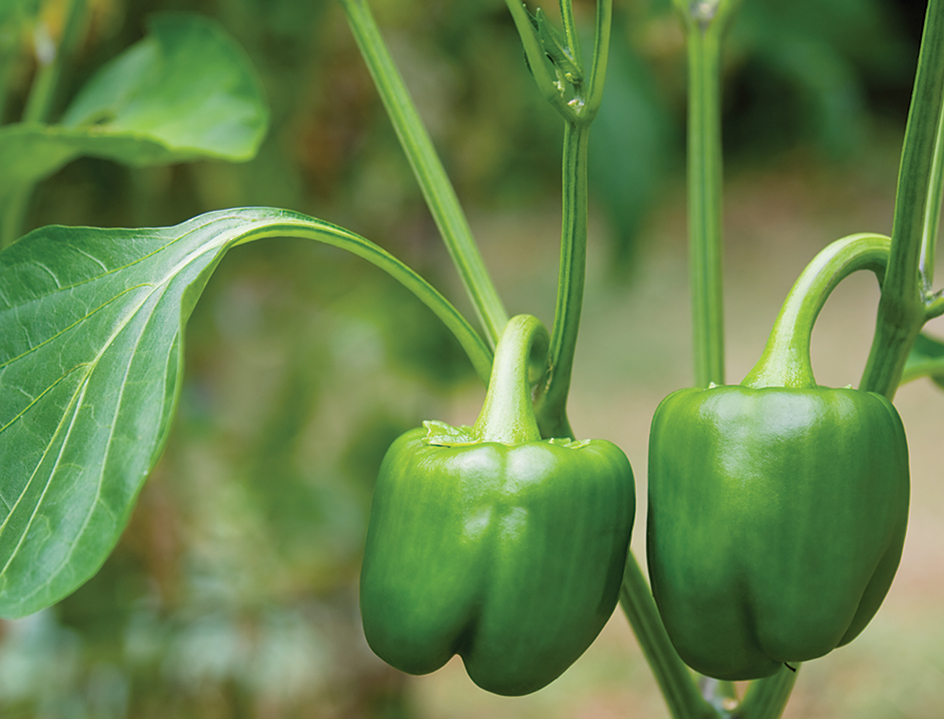Pepper is a group of shrubby plants often grown for their fruit, which are also called peppers. In some parts of the world peppers are called capsicums. There are a few dozen species (kinds) of pepper plants, but most species are not cultivated.
Pepper plants probably originated in South America. Early American Indians used peppers in their cooking. In the late 1400’s and the 1500’s, European explorers brought peppers from America to Europe, as well as Africa and Asia. Today, peppers are grown throughout much of the world. In tropical regions, pepper plants are perennials, which means they live for at least two growing seasons. In temperate areas, which have hot summers and cool or cold winters, the plants are annuals and live only one growing season.
Pepper fruit consists of a thick, fleshy wall that surrounds a mass of seeds. The wall is eaten fresh as a vegetable. Fresh peppers can also be dehydrated, pickled, and canned for eating. Pepper fruit is ground up to make the spice known as red pepper (also called cayenne pepper). Other seasonings that are made from peppers include chili powder and paprika. The spices black pepper and white pepper are made from another kind of plant (see Pepper [the spice] ).
Many varieties of peppers are grown commercially. The cup-shaped bell pepper has three or four lobes (rounded sections) and is usually eaten when immature and green. If allowed to mature on the plant, it turns red, yellow, or purple. Other widely cultivated peppers include the long banana pepper, the flattened pimento pepper, the slender chili pepper, and the round cherry pepper. Peppers have either a sweet taste or a sharp taste, depending on the amount of a compound called capsaicin in the fruit.

Growers raise peppers from seeds. They generally plant the seeds in a greenhouse or in cold frames (glass-covered boxes). The seedlings are transplanted outdoors after about 8 weeks. Growers use a mechanical transplanter to place the seedlings in the soil about 1 1/2 feet (46 centimeters) apart and in rows about 3 feet (91 centimeters) apart.
Peppers grow best in warm, moist regions with growing seasons of over 125 days. Temperatures under 55 °F (13 °C) can inhibit growth and ripening. Growers occasionally spread plastic mulches or other protective coverings over the soil to warm the plants’ environment. This covering extends the growing season.
Pepper plants flower about three to four weeks after transplanting. The plants commonly grow to a height of 3 1/4 feet (1 meter) or more. Growers sometimes support pepper plants with stakes and string to keep them from spreading along the ground.
Diseases caused by bacteria, fungi, and viruses can attack pepper plants. In addition, insects feed on the plant’s stem, leaves, and fruit. Growers control these problems by planting disease-resistant varieties of peppers and by carefully using appropriate pesticides.
